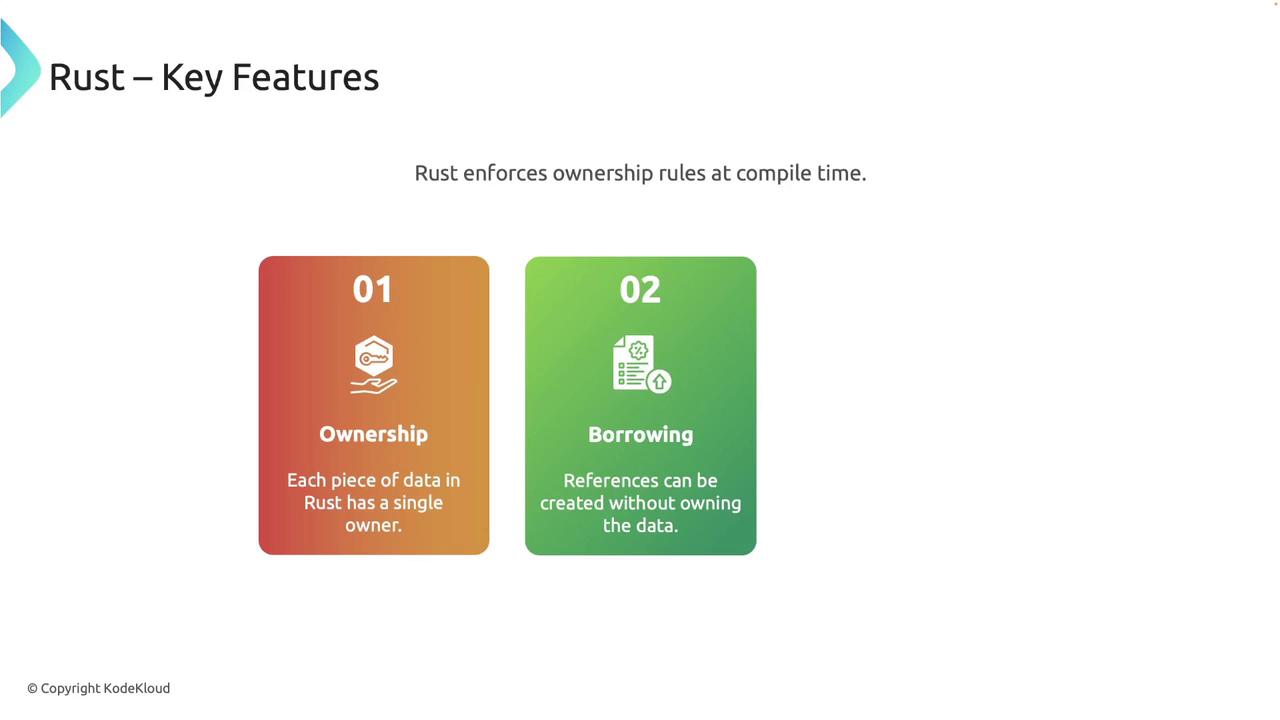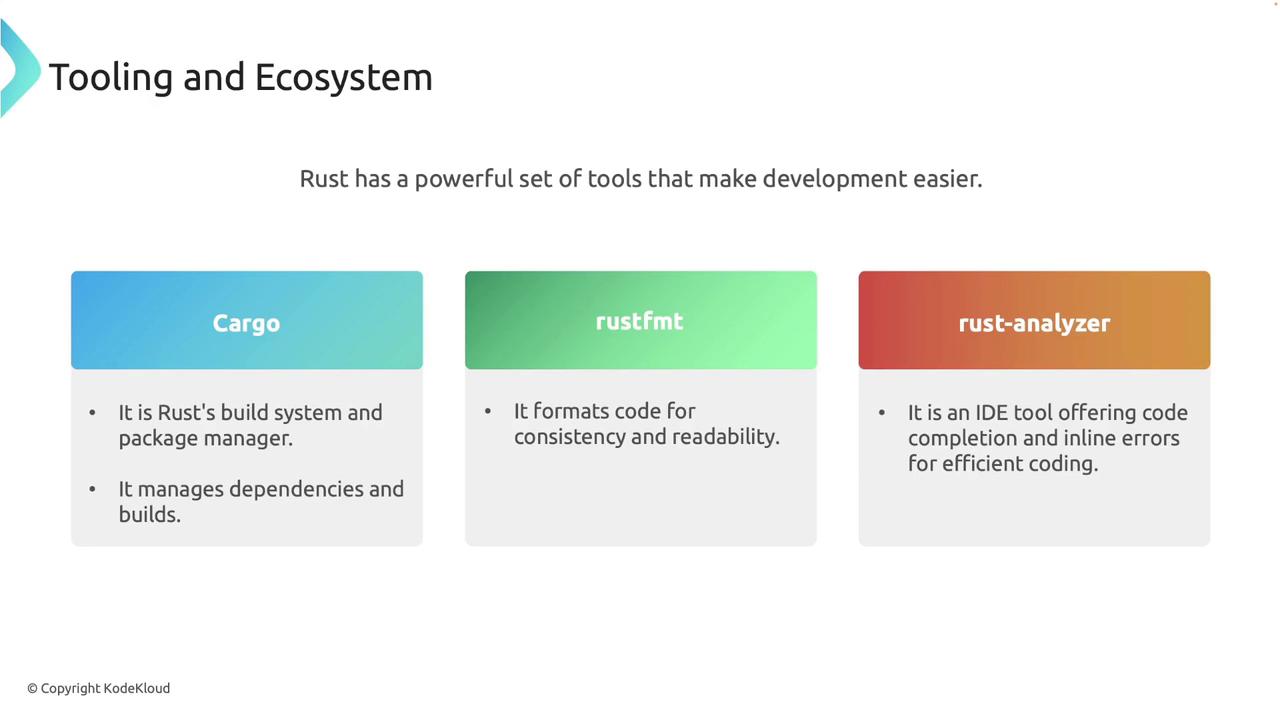Rust Programming
Getting Started with Rust
Overview of Rusts Key Features
Rust stands out among programming languages due to its innovative blend of memory safety, performance, and concurrency. In this article, we delve into the core features that make Rust unique, providing detailed explanations for beginners and seasoned developers alike.
Note
This guide is ideal for those new to Rust as well as professionals looking to deepen their understanding of its features.
Memory Safety
Rust's approach to memory management sets it apart by eliminating the need for a garbage collector while ensuring robust safety measures during runtime. Central to this design are several key principles:
- Ownership: Each piece of data in Rust is owned by a single variable, ensuring clear management of resources.
- Borrowing: Data can be accessed through references without transferring ownership, allowing safe sharing.

Additionally, Rust introduces the concept of lifetimes, which guarantees that all references remain valid for the duration of their use, further enhancing memory safety.
Concurrency
Concurrency in Rust empowers developers to design programs that can execute multiple tasks simultaneously. By leveraging Rust's ownership system, the language minimizes common concurrency pitfalls, such as data races, at compile time. This results in highly efficient, safe concurrent code that is easier to manage and scale.
Developer Tip
Rust's compile-time checks for concurrency issues allow developers to catch potential problems early, leading to more stable multithreaded applications.
Performance
Engineered for speed, Rust offers performance on par with C and C++ while maintaining high-level safety features. Developers gain low-level control over memory and system resources without sacrificing reliability. Rust's design achieves a perfect balance—delivering fast, predictable applications without common programming errors.
This distinct philosophy combines the reliability of high-level languages with the speed of low-level ones, making Rust an excellent choice for performance-critical applications.
Development Tools
Rust's ecosystem includes a suite of robust tools that streamline the development process:
- Cargo: The build system and package manager for Rust, which simplifies dependency management and project compilation.
- Rustfmt: A code formatter that standardizes style, ensuring that your code remains clean and consistent.
- Rust Analyzer: An advanced IDE tool that provides features such as code completion and inline error messages for a smoother coding experience.

In Summary
Rust's combination of memory safety, efficient concurrency, impressive performance, and a powerful toolchain makes it a compelling language for modern software development. Its innovative design principles not only provide developers with unmatched control and safety but also streamline the creation of robust and scalable applications.
For further exploration of Rust and its expanding ecosystem, consider visiting the Rust Documentation and exploring related resources.
Watch Video
Watch video content